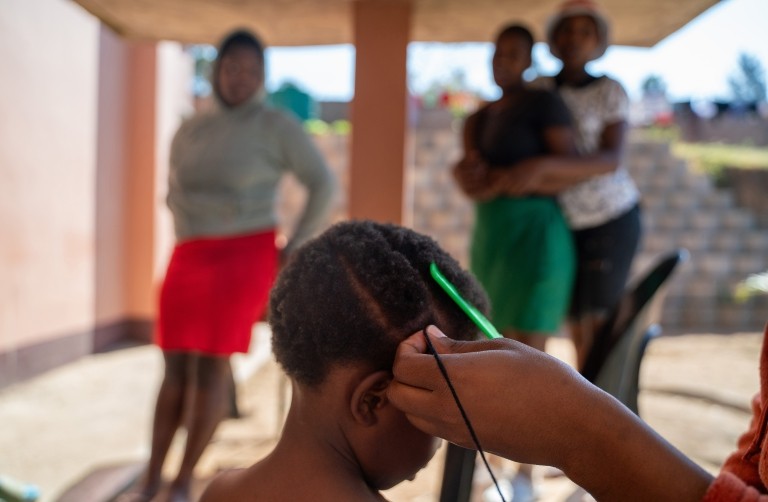Blog
In Eswatini, community-based HIV programming is a gateway to vaccinate adolescent girls against HPV

In 2018, when Pact began the USAID-funded Insika ya Kusasa project to combat HIV in Eswatini, HPV vaccines weren’t available in the country, and Covid-19 didn’t exist. Yet the project has played a key role in helping the small African nation to provide vaccinations for both viruses.
This is because of Pact’s approach to HIV programming, and because of the flexibility of our work and partners. Like other major efforts to respond to HIV, the PEPFAR/USAID-funded Insika ya Kusasa project, which recently ended after five years, focused on vulnerable populations, including orphans and vulnerable children (OVC). Community case workers routinely visited tens of thousands of households, providing critical case management to help families get testing and treatment for HIV, and to reduce their vulnerability to HIV infection. Case workers helped children return to and stay in school. They helped caregivers to increase their incomes, engage in positive parenting, understand the importance of antiretroviral medication and nutrition and much more.
“This gives us an incredible platform to reach the families we serve,” explains Alison Koler, a deputy director with Pact’s global health team. “We’ve learned that when public health needs change, we can use that platform to respond very quickly and effectively because we already have the community workforce, the rapport with community leaders and, most importantly, relationships with families.”
That’s exactly what happened when the Covid pandemic began. Because Pact was already well positioned in the community, USAID expanded Insika ya Kusasa’s scope to respond to Covid. Initially, Pact was charged with educating communities about how to prevent the spread of the virus. When a vaccine became available, Pact was tasked with supporting Eswatini’s Ministry of Health in the country’s vaccination effort. Leveraging the Insika project infrastructure, Pact vaccinated over 120,000 people, representing 28% of the total number of people vaccinated against Covid in the country.
The Covid vaccine became out of stock in Eswatini earlier this year at the same time that the government began the national launch of the HPV vaccine. It made sense for Pact to again change gears.
“We pivoted for Covid response, and then we pivoted again to work on HPV once vaccines became available,” Koler says. “This is a great example of how governments, NGOs and international donors can flexibly work together to meet global health needs as they arise.”
HPV – the human papilloma virus – is the most common sexually transmitted infection in the world, and its effects can be fatal. HPV causes various types of cancers, including cervical cancer, which is the leading cause of cancer deaths among women in sub-Saharan Africa. HPV vaccination has proven effective in reducing HPV-induced cancers. The World Health Organization has set a target to vaccinate 90% of girls by 15 years of age by 2030.
To promote HPV vaccination in Eswatini, Pact leveraged its Insika program infrastructure, including our strong relationships with community leaders, existing vaccination teams and rapport with caregivers and girls.
“HPV education and HPV vaccination were provided as integrated services,” says Nosipho Storer, who served as Insika’s chief of party. “Most important to our success was extensively engaging caregivers of the target group—girls age 9 to 14— prior to vaccination. We took the time to ensure caregivers had a strong understanding of the benefits of the HPV vaccine for their girls.”
Specifically, Pact worked with primary schools to provide HPV information to parents through school committees, and to teachers. We used social media platforms to raise awareness about HPV and to promote HPV vaccine uptake, and conducted community HPV vaccine demand creation events targeting adolescent girls and their caregivers. Pact successfully deployed roving vaccination teams to conduct household-level HPV vaccination education with eligible adolescent girls and their caregivers and on-demand HPV vaccination upon consent.
Over three months beginning in July, Pact reached more than 2,400 people with HPV education and administered the HPV vaccine to over 1,700 adolescent girls, marking an initial, pivotal stride in the journey toward HPV prevention.
“Along with our partners, through flexibility and collaboration,” Koler says, “we’re proud that Pact has been able to meet communities’ health needs as they emerge.”